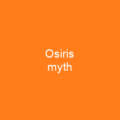Troy: The Ancient City That Time Forgot
Imagine a city that has stood the test of time for over four thousand years, rising and falling like the tides of history itself. This is Troy, an ancient city whose ruins now lie in the hills of Hisarlık, Turkey. Could this be the same place where Homer’s epic tales of war and glory took place?
The Layers of History
Troy is not just one city but a series of cities built on top of each other over millennia. Archaeologists divide these layers into nine distinct periods, labeled with Roman numerals from I to IX. Each layer represents a different era in the city’s history, from its humble beginnings around 3600 BC to its final days as a tourist attraction and religious center during the Greek and Roman times.
Troy II: The Golden Age
Among these layers, Troy II stands out. This period (around 2550-2300 BC) saw the city grow into a major power with impressive architecture and wealth. Its massive stone walls and towers, along with its imposing megaron-style buildings, hint at the grandeur of this era. Could these structures be the ones described in Homer’s Iliad?
The Excavations That Unearthed History
The story of Troy’s discovery is as fascinating as its history itself. In 1871, Heinrich Schliemann and Frank Calvert began excavating the site, uncovering layers that seemed to match the descriptions in Homer’s epics. 
The Layers of Troy
Each layer tells its own story. From the earliest settlements (Troy I) with their simple stone houses and handmade pottery, to the grandeur of Troy VI (1750-1300 BC), which displayed characteristics consistent with Homer’s descriptions. Could this be the city where the Trojan War took place?
Troy in Myth and History
The myth of Troy is deeply intertwined with history. The city was a vassal state of the Hittite Empire, known as Wilusa or Taruisa. Its final layers (Troy VIII-IX) were Greek and Roman cities that served as tourist attractions and religious centers due to their connection to Homeric tradition.
The Modern Troy
Today, the archaeological site of Troy is open to the public as a tourist destination. It was added to UNESCO’s World Heritage list in 1998, recognizing its significance not only for archaeology but also for literature and history. The new museum at Tevfikiye village houses over 40,000 artifacts, offering visitors an immersive experience into this ancient city.
Conclusion
Troy is more than just a place; it’s a symbol of human resilience and the enduring power of myth. From its humble beginnings to its grandeur as described in Homer’s Iliad, Troy has captivated the imagination for centuries. As we continue to uncover its layers, we are reminded that history is not just about the past but also about the stories we tell ourselves today.
You want to know more about Troy?
This page is based on the article Troy published in Wikipedia (retrieved on November 27, 2024) and was automatically summarized using artificial intelligence.







